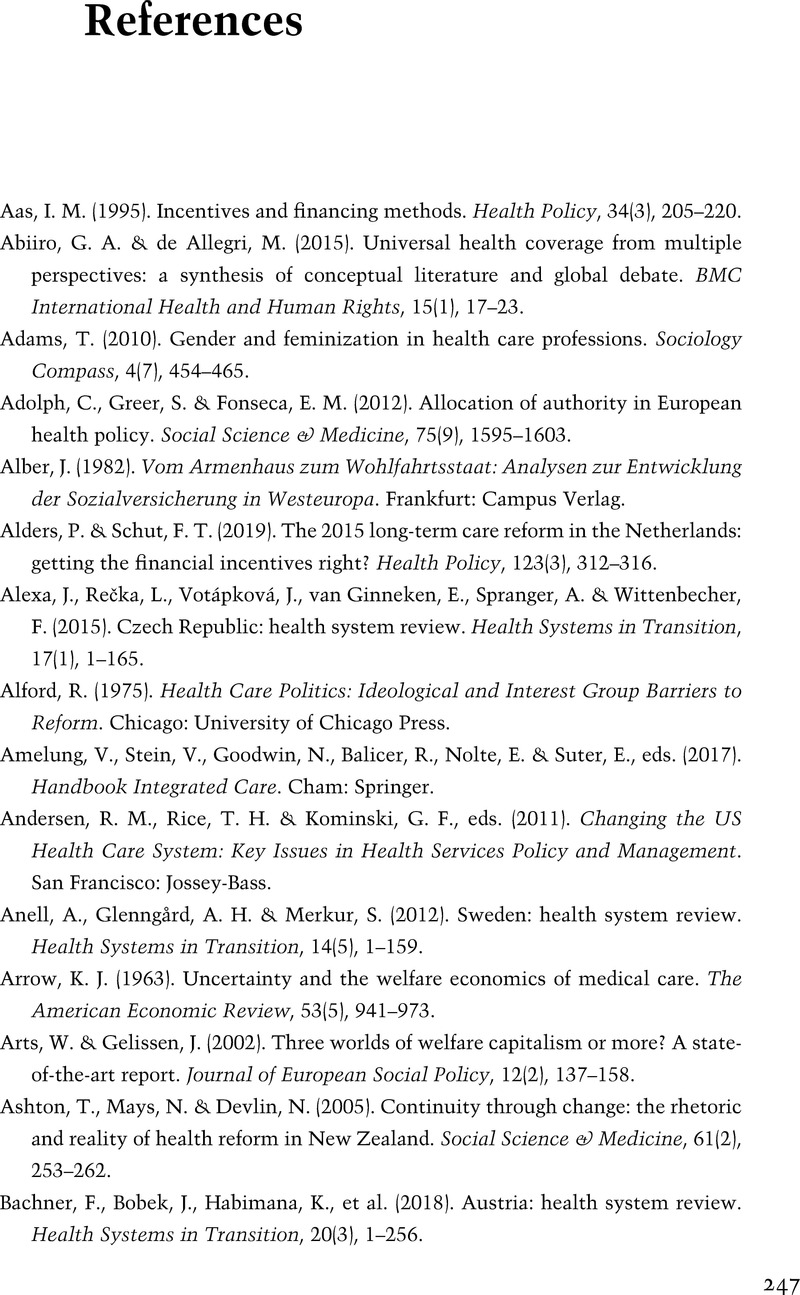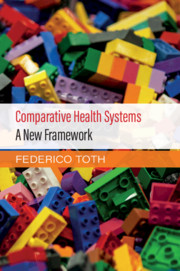Book contents
- Comparative Health Systems
- Comparative Health Systems
- Copyright page
- Dedication
- Contents
- Figures
- Tables
- Acknowledgments
- Acronyms
- Introduction
- 1 Seven Financing Models
- 2 Funding Healthcare
- 3 Healthcare Expenditure and Insurance Coverage
- 4 Healthcare Provision
- 5 Financing and Provision
- 6 Hospitals, Doctors and Nurses
- 7 Healthcare Reforms over the Last Thirty Years
- 8 Health Politics
- Conclusions
- References
- Index
- References
References
Published online by Cambridge University Press: 20 August 2021
- Comparative Health Systems
- Comparative Health Systems
- Copyright page
- Dedication
- Contents
- Figures
- Tables
- Acknowledgments
- Acronyms
- Introduction
- 1 Seven Financing Models
- 2 Funding Healthcare
- 3 Healthcare Expenditure and Insurance Coverage
- 4 Healthcare Provision
- 5 Financing and Provision
- 6 Hospitals, Doctors and Nurses
- 7 Healthcare Reforms over the Last Thirty Years
- 8 Health Politics
- Conclusions
- References
- Index
- References
Summary

- Type
- Chapter
- Information
- Comparative Health SystemsA New Framework, pp. 247 - 272Publisher: Cambridge University PressPrint publication year: 2021



